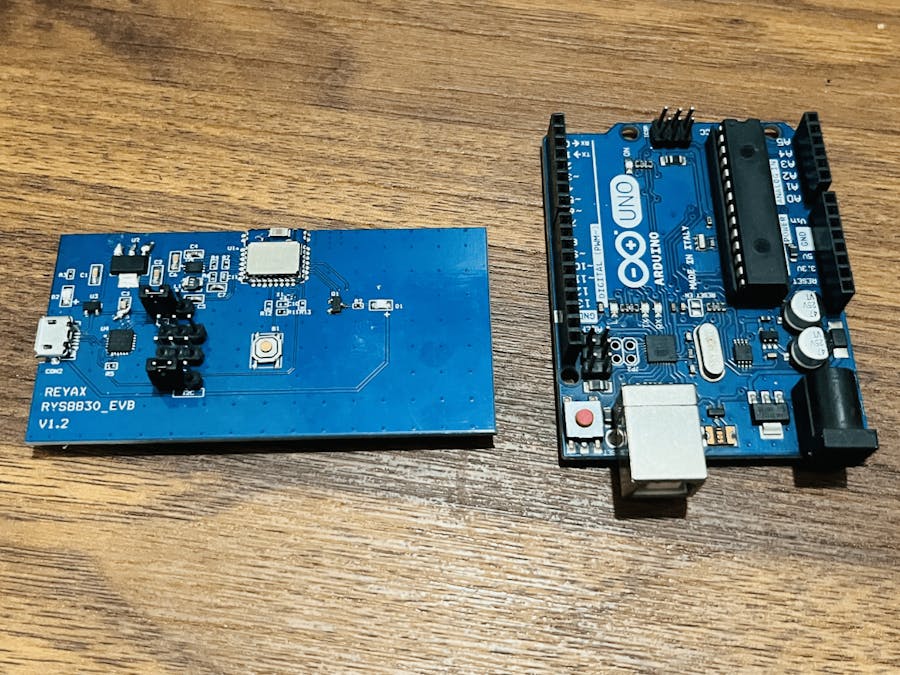In this tutorial we will interface the world’s smallest GNSS+GPS module to get the readings on the screen. There are many GPS modules available in market which are very accurate and can be easily configured with small microcontroller but we are using RYS8830 from Reyax Technologies which comes with small onboard antenna. So no need of any high gain big ceramic antenna. We will also see how the RYS8830 development board directly configured and connected via the USB to Serial interface.
Gerber files of GNSS shied is also shared below so that you can directly upload the files and order the prototypes.
JLCPCB is the leading PCB manufacturer form CHINA, deals in different PCB and prototyping products including Stencil, 3d designing, RF PCB and ultra precision PCB. Check official webpage now from here and get your first PCB in just $2 for 5pcs of 2 and 4 layer board.
GNSS and Positioning:global navigation satellite system (GNSS) is a general term describing any satellite constellation that provides positioning, navigation, and timing (PNT) services on a global or regional basis.
The performance of GNSS is assessed using four criteria:
Accuracy: the difference between a receiver’s measured and real position, speed, or time.
Integrity: a system’s capacity to provide a threshold of confidence and, in the event of an anomaly in the positioning data, an alarm.
Continuity: a system’s ability to function without interruption.
Availability: the percentage of time a signal fulfills the above accuracy, integrity, and continuity criteria.
RYS8830:The REYAX RYS8830 1.8V GNSS module is built on the high performance of the SONY CXD5605AGF GNSS engine. The RYS8830 module utilize concurrent reception of GNSS systems offering high sensitivity in a small SMD form factor.
FEATURES:
- SONY CXD5605AGF multi-GNSS receiver for GPS, GLONASS, Galileo
- Small SMD form factor 121mm^2
- Enhanced GNSS Filter and Low Noise Amplifier
- Ultra-low power consumption
- Up to Position accuracy 1.0 m CEP
- Embedded Antenna
- Optional external antenna
The hot start is when the GNSS receiver remembers the time (UTC), the last calculated position and a sufficient number of satellites in view (e.g. more than four satellites) and some information about the satellites constellation (almanac). In particular, the receiver used the stored information and makes an attempt to lock onto the same satellites and calculate a new position. The hot start is only applicable when the receiver is started in the same location where it was turned off. The benefit of the hot start is that it does take much less time to get the new position compared to the other modes.
The warm start is when the GNSS receiver remembers only some data, such as the time, last calculated position, almanac. In contrast to the hot start, the receiver does not remember which satellites were in view. The warm start takes longer than a hot start but not as long as a cold start.
The cold start is when the GNSS receiver is switched on for the first time or does not remember the previous data. The cold start takes much longer than the other two modes.
Components required:- RYS8830 EVB or Custom PCB
- Serial interface IDE (Arduino IDE)
- 5V battery power supply
- Jumpers and wires
To quick start and get the GPS readings immediately, Connect the EVB shield to laptop directly and open any Serial to USB communication IDE. Here I am using Arduino IDE which has a better interface and can print the readings on the serial port.
Here are some quick commands to start the GPS after establishing the connection with any COM port. Just open the serial port and type these commands.
1) @GSTP
2) @GNS 47
3) @GSR
This will stop the position first at one instant and then second command establish the connection for positioning and time. GSR command will hot start the module so it will take less time to configure, if it not works then go automatically for warm and cold start method discussed in brief above.
Getting the serial readings:You will get the instant readings of different positioning systems in the serial monitor and it will take some time (usually 1-2 minutes) to give accurate readings. Then search for GPRMC and GPGGA reading. To decode the data from these readings, open online GPRMC and GPGGA decoder and paste the code there. This weird looking string has a lot of information (location info) so do not share with anyone. You will get co-ordinate readings with positioning in google maps.
As an example I am taking a random string from the internet of GPRMC and GPGGA which redirects to the Canada Country. This will tell the exact position differ by only 10-50 meters. It is the best decoder tool I found on internet which not only decode the co-ordinates but also gives the point location in the map.
Owner shared the real and official circuit of this GNSS module in a schematics and Gerber files are also available for ordering the PCB from any PCB manufacturer.
You can download the circuit and Gerber files from here, can upload the file on JLCPCB to order the PCB from there. Sign-up using this link to JLCPCB and get free coupons of worth $54.









Comments
Please log in or sign up to comment.